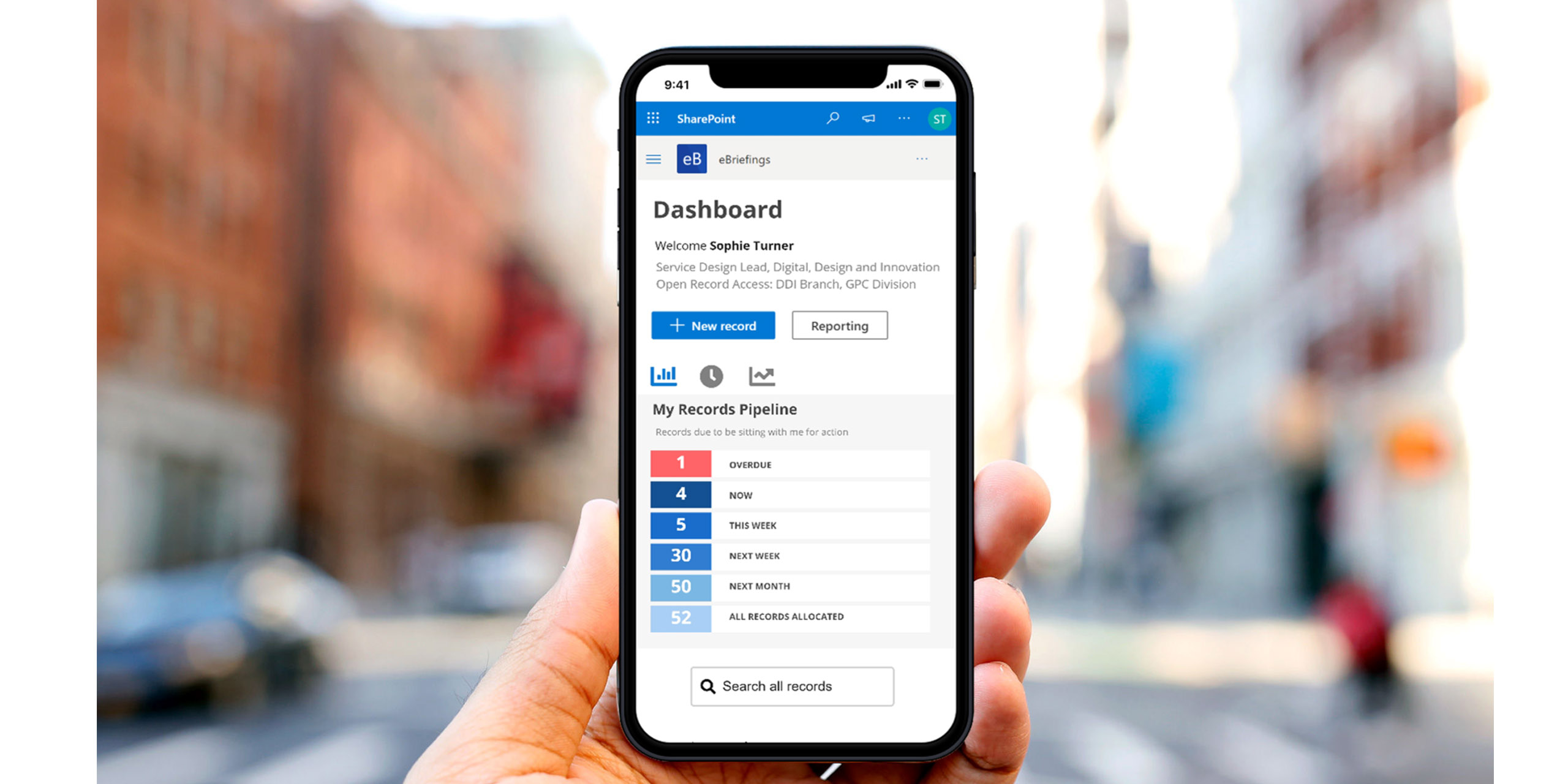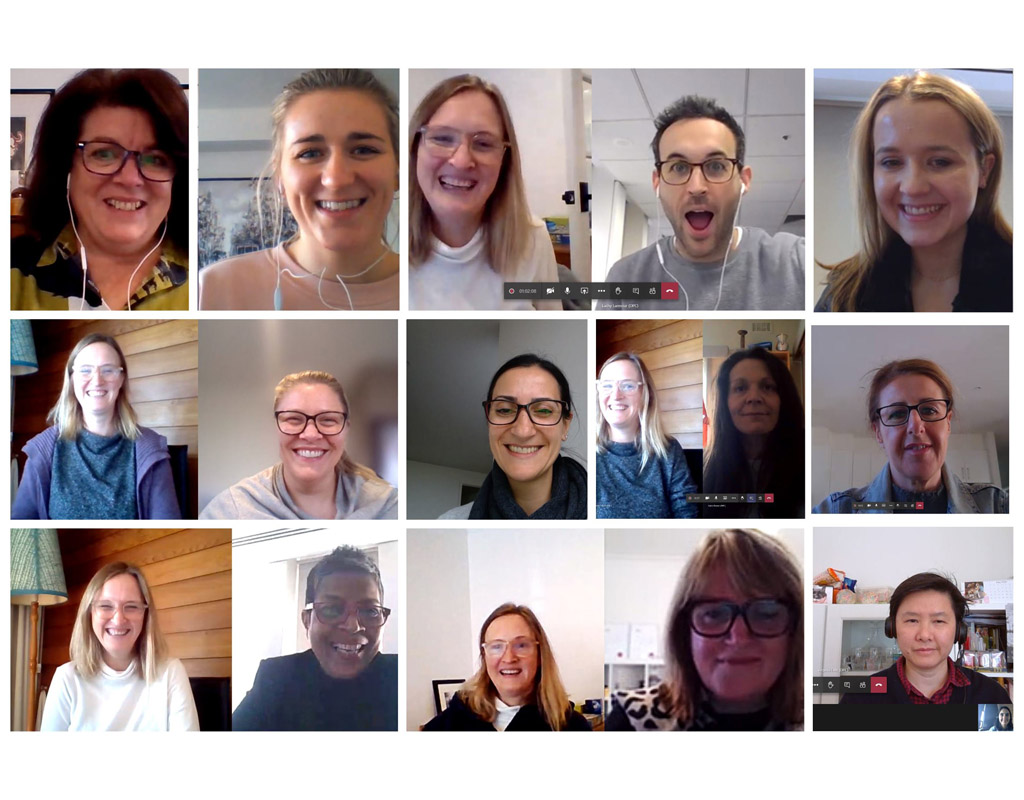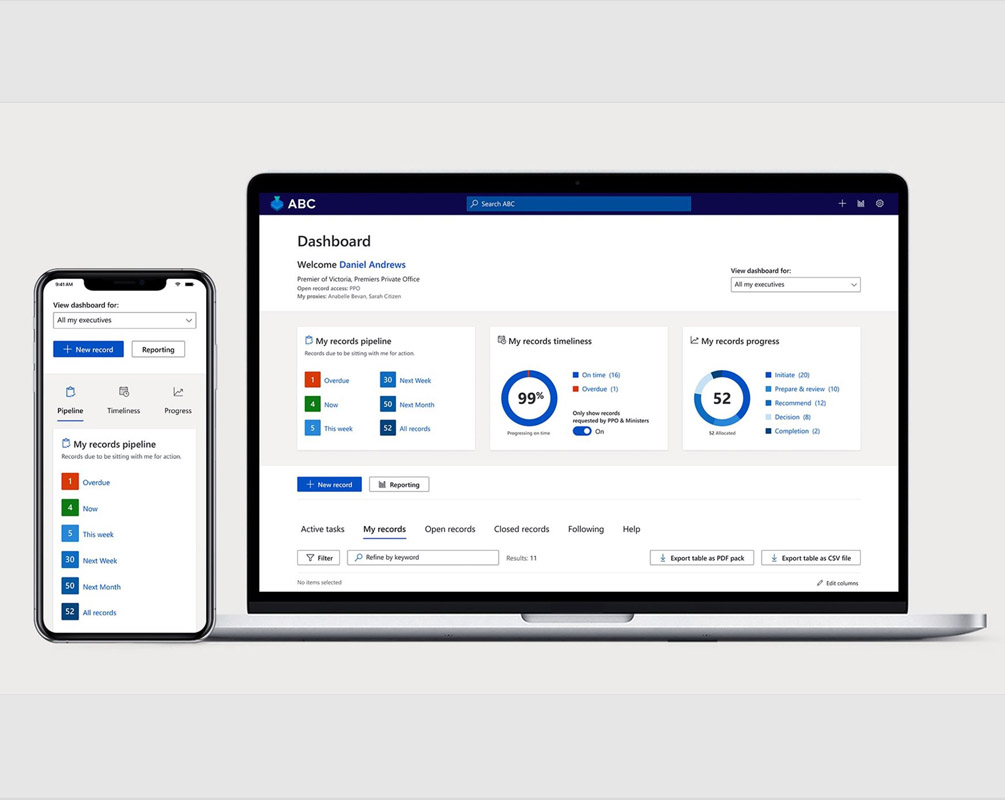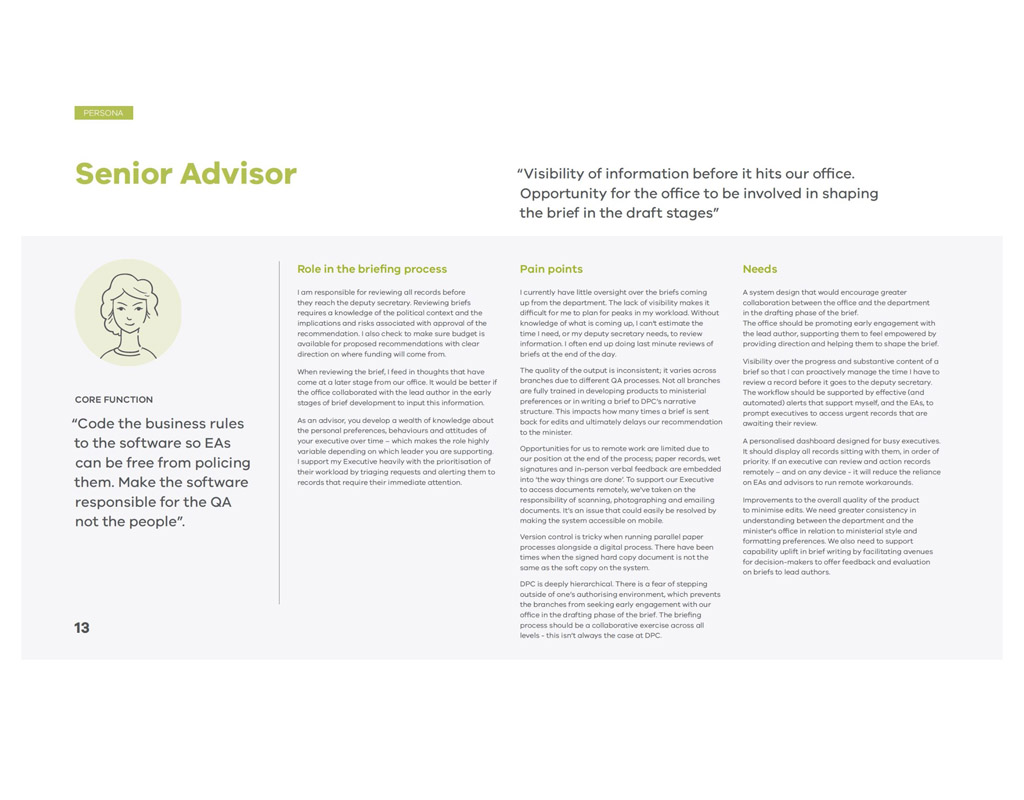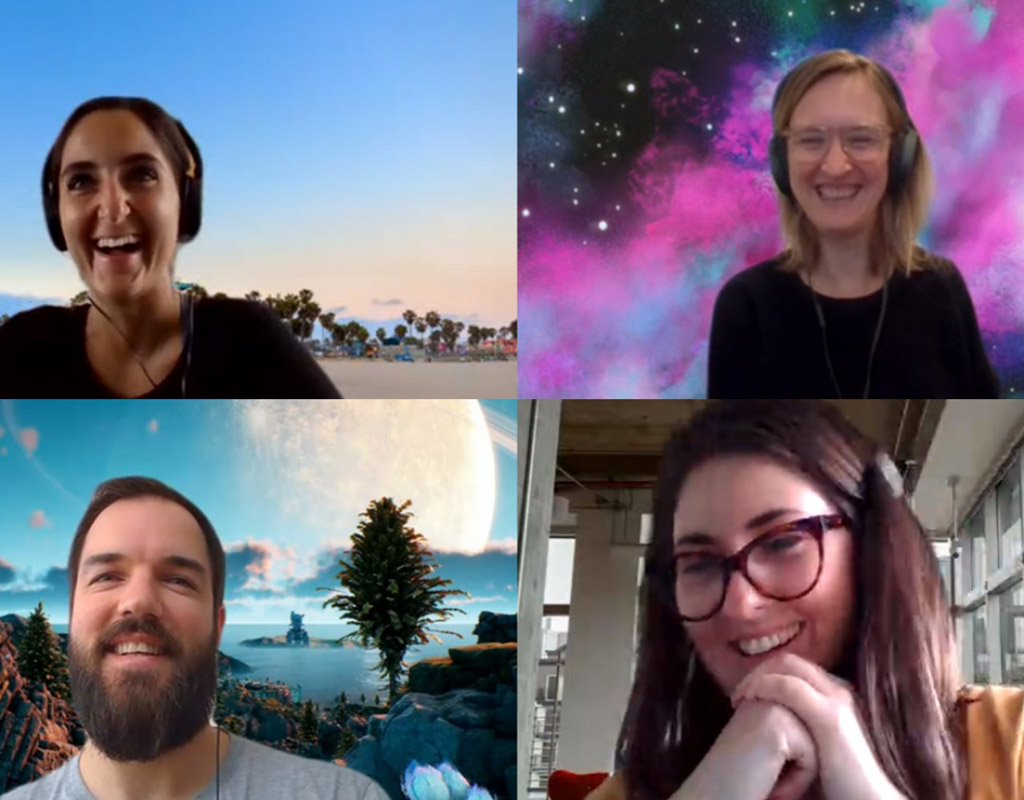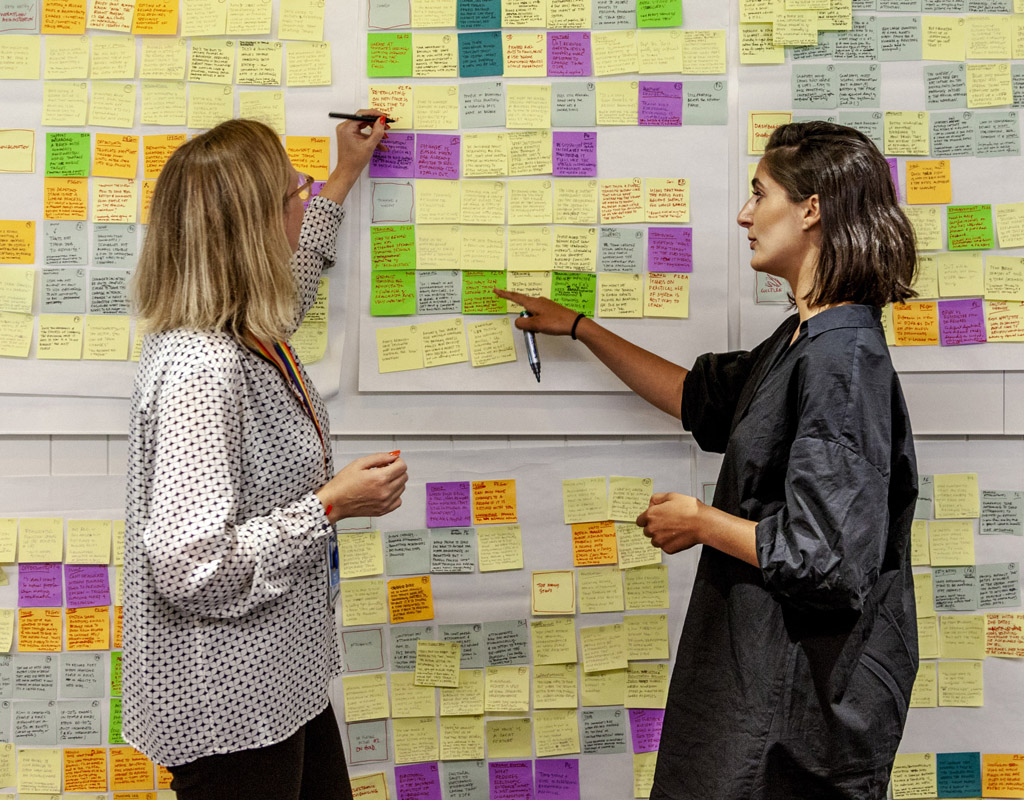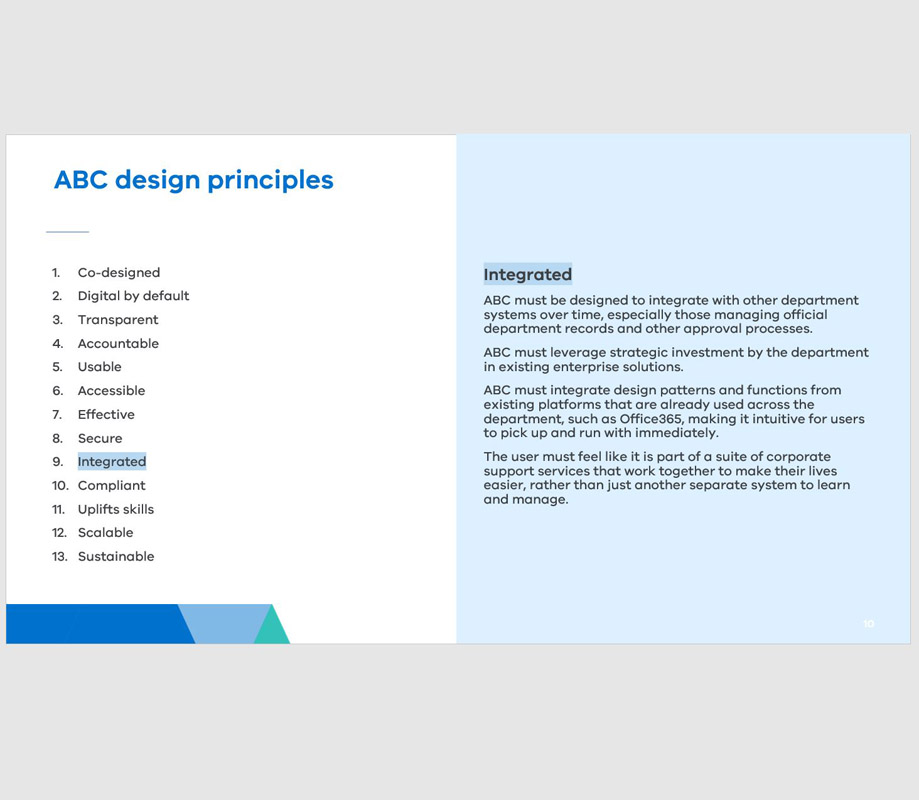By examining the previous attempts to solve this problem, we identified the need for an innovative approach. One that was unfamiliar and sometimes uncomfortable for our stakeholders. Complex problems with both technical and human dimensions are ideally suited to Human Centered Design.
“Success for me is making the lives of others easier.” Chris Eccles, Former DPC Secretary
We applied the following ideas to challenge existing ways of working through our design process:
This is primarily a change challenge, underpinned by technology, requiring a multi-disciplinary team. Focused team effort on listening and adapting to our staff, prioritising their needs over business and technology constraints when trade-offs need to be discussed.
- Engage ALL key roles and business stakeholders to co-design the solution together. Our engagement approach allowed us to dive deep with over 175 end users directly over the 18 months of design and development (20% of DPC staff) whilst also providing light touch demos and communications to reach all branches within our department to raise awareness of the change.
- Simplify business processes before defining the technical solution. Carefully observed the current business process to detect and remove redundant or wasteful actions considering this from a technology agnostic perspective
- Sensing for the sweet spot where desirability, feasibility and viability meet: Desirability tested using the interactive prototype. Feasibility tested by co-producing the prototype side by side with our developers. Viability tested using the service design blueprint and business case to DPC Board of Management.
- Develop the product using an agile development approach Users and stakeholders were involved at all stages. Using an agile development approach, we built and tested with users iterating throughout the development process. New insights were incorporated as users were able to fully interact with the product with live data in real life scenarios.

